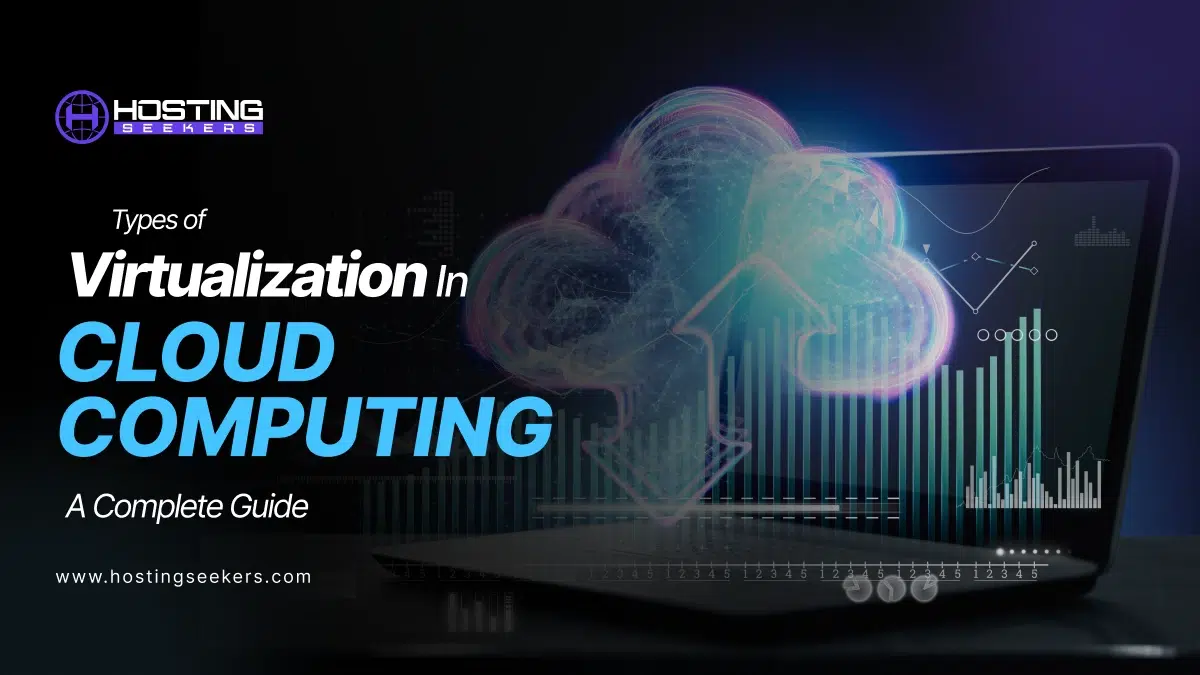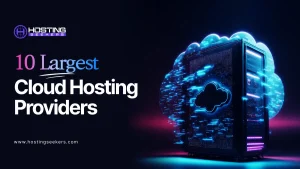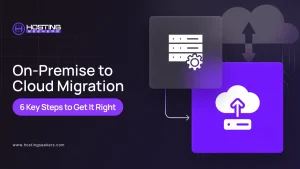
Types of Virtualization in Cloud Computing: A Complete Guide
Cloud Industry Updated on : May 15, 2025Table of Content
Cloud computing has emerged as one of the cornerstones of modern IT infrastructure. Virtualization stands at the forefront of this revolution, enabling virtual resources to be derived from physical resources, achieving utmost efficiency, scalability, and cost-effectiveness. This blog outlines the complexities of virtualization in the face of cloud computing, its types, applications, benefits, and limitations, providing a comprehensive roadmap to IT professionals as well as business executives.
What is Virtualization in Cloud Computing?
Virtualization in cloud computing refers to creating virtual copies of physical resources such as servers, storage devices & networks. It is accomplished by software that isolates the underlying hardware & enables multiple virtual machines (VMs) to be executed on a single physical machine. The hypervisor, which is the fundamental component, takes the leading role in the process & is vital in the creation, execution & administration of VMs.
What is the Importance of Virtualization?
- Efficiency: Virtualization optimizes resource utilization by making multiple applications use one server, maximizing hardware utilization.
- Scalability: It enables firms to increase or decrease IT resources as needed, ensuring flexibility & responsiveness.
- Cost Savings: Companies can cut down on hardware expenses & operational expenses by consolidating, making it a cost-effective solution.
What are the Types of Virtualization in Cloud Computing?
Virtualization in cloud computing is a powerful technology that enables building virtual resources from physical resources, achieving efficiency, scalability & cost-effectiveness. There are different types of virtualizations, each designed for a particular use & benefit. The following is an organized description of the types & their applications:
1. Hardware Virtualization (Hypervisor-based)
- Definition: It uses a hypervisor, a software layer that creates & controls virtual machines (VMs) on a physical server.
- Use Cases: This technology is ideal for data centers to improve server usage and enterprises where multiple operating systems need to be run on one physical server.
- Benefits: It enhances resource utilization, allows multiple OSs to run on a single machine, and boosts performance with direct hardware access.
- Examples: VMware ESXi, Microsoft Hyper-V.
2. Server Virtualization
- Definition: Splits an actual server into multiple VMs, each running its OS.
- Use Cases: Executing multiple applications on a solitary server, reducing hardware cost & improving disaster recovery options.
- Benefits: Reduces hardware cost, improves resource utilization & raises scalability.
- Examples: Amazon uses VMs to execute cloud services.
3. Storage Virtualization
- Definition: Aggregates multiple physical storage devices to create a virtual storage pool.
- Use Cases: It simplifies storage management, improves data availability, and is appropriate for organizations with large amounts of data.
- Benefits: Improves storage efficiency, flexibility & accessibility.
- Examples: Used in organizations that require central management of storage.
4. Network Virtualization
- Definition: Virtualizes network resources to offer a virtual network that can be centrally managed.
- Use Cases: Streamlines network management, strengthens security & applies to environments where flexible network setups are needed.
- Benefits: Decreases hardware dependency, optimizes network performance & increases security.
- Examples: Applied to cloud environments for elastic network management.
5. Desktop Virtualization
- Definition: Enables multiple desktop environments to be run on one physical machine.
- Use Cases: Best suited to remote work situations, offering Virtual Desktop Infrastructure (VDI).
- Benefits: Offers flexibility, minimizes hardware expenses & enables remote work.
- Examples: Citrix provides remote desktop services.
6. Application Virtualization
- Definition: Runs applications in a virtual environment without installing them on the local OS.
- Use Cases: Automates application deployment & reduces application conflict with the OS.
- Benefits: Automates application management, reduces conflicts & increases portability.
- Examples: Used in organizations that need rapid application deployment.
7. Data Virtualization
- Definition: Provides a single view of data from multiple sources without physical data movement.
- Use Cases: Integration of data from scattered databases & applications.
- Benefits: Makes data more accessible, reduces data silos & improves data management.
- Examples: Installed in companies requiring data integration from various sources.
What is the Unique Benefit of Each Type?
1. Hardware Virtualization: Designed for data centers for maximum server use.
2. Server Virtualization: Most appropriate for companies with fluctuating workloads.
3. Storage Virtualization: Most appropriate for companies with a high amount of data.
4. Network Virtualization: Used in environments that require dynamic network management.
5. Desktop Virtualization: Suitable for remote office settings.
6. Application Virtualization: Used in organizations that require the timely deployment of applications.
7. Data Virtualization: Facilitates the consolidation of various data sources.
What are the Examples from Real Life for Virtualization?
1. VMs in Server Virtualization: VMs are used by Amazon to host their cloud products.
2. Citrix in Desktop Virtualization: Citrix is used by organizations to provide remote desktop services.
What is the Difference Between Type 1 Virtualization and Type 2 Virtualization?
Knowing the difference between Type 1 and Type 2 virtualization is critical in a proper decision:
Type 1 Virtualization runs directly on the hardware, offering better performance and efficiency. It is suitable for enterprise environments.
Examples: VMware ESXi, Microsoft Hyper-V.
Type 2 Virtualization runs on top of an existing operating system. It is easier to set up but has potential performance overhead. It is suitable for personal use and development environments.
Examples: VirtualBox, VMware Workstation.
What are the Limitations & Challenges of Virtualization?
Although virtualization is beneficial in several ways, challenges are also inherent:
- Performance Overhead: Virtualization entails additional abstraction, & this can lead to performance overhead.
- Security Risks: Virtual environments are open to security threats & this requires stringent security controls.
- Difficulty in Management: It is not easy to manage a virtualized environment, especially as the number of VMs increases.
- Licensing & Cost Issues: Organizations must carefully consider the total cost of ownership, including licensing and operating costs.
Pros and Cons of Virtualization
Pros
Let’s check out the benefits of Virtualization in Cloud Computing:
- Virtualization allows multiple virtual machines to run on a single physical machine, reducing the need for additional hardware.
- Fewer physical servers mean lower power and cooling requirements, saving energy costs.
- By running multiple VMs on one physical server, CPU, memory, and storage resources are used more efficiently.
- Resources can be dynamically allocated to VMs as required, enabling optimal performance.
- VMs can be easily scaled up or down depending on demand without requiring additional hardware.
Cons
Let’s check out the disadvantages of Virtualization in Cloud Computing:
- Virtual machines in cloud computing may not perform as well as physical machines due to the overhead introduced by the hypervisor.
- Managing a virtualized environment can be complex, requiring specialized knowledge and skills.
- Although VMs are isolated, there is a risk of isolation failures that can lead to security breaches.
- While virtualization reduces hardware costs in the long run, the initial setup can be expensive, including purchasing virtualization software and powerful servers.
How Virtualization Works in Cloud Computing?
1. Resource Optimization: Virtualization allows better utilization of physical hardware by running multiple VMs on a single physical machine, reducing idle resources and maximizing efficiency.
2. Scalability: Virtual machines can be seamlessly scaled up or down depending on demand. This significant scaling is vital for cloud environments where resource demand can differ significantly.
3. Isolation and Security: Virtual machines are also isolated from one another, which expands security by preventing VMs from accessing each other’s resources.
4. Flexibility and Portability: VMs can be moved to various physical machines or data centers with minimal downtime, providing flexibility and easy maintenance.
5. Disaster Recovery and High Availability: Virtualization supports snapshotting and cloning, making it easier to back up VMs and restore them in case of failure.
Conclusion
Virtualization is a new-age technology in cloud computing that is highly efficient, scalable, and cost-saving. Organizations can make informed decisions to optimize their IT infrastructure by studying different types of virtualization and their applications. As cloud computing continues to evolve, embracing virtualization will be the driving force to be competitive and agile in the online space.
Frequently Asked Questions (FAQs)
Q 1. What are the 5 levels of virtualization?
Ans. The five levels of virtualization are Hardware virtualization, Operating System Virtualization, Application Virtualization, Network Virtualization, and Server Virtualization.
Q 2. What are Type 1 and Type 2 Virtualization in cloud computing?
Ans. Type 1 and Type 2 Virtualization in Cloud Computing
- Type 1 Virtualization: Bare-metal hypervisors that execute directly on the hardware for better performance & efficiency.
- Type 2 Virtualization: Virtualization installed on top of a host operating system for development and home use.Examples are VirtualBox and VMware Workstation.
Q 3. What are the limitations of virtualization in cloud computing?
Ans. Virtualization entails additional abstraction, which can lead to performance overhead. Virtual environments are also open to security threats and require stringent security controls.
Q 4. What are some everyday use cases for virtualization in businesses?
Ans. Daily use cases include server consolidation, disaster recovery, and application testing.
Q 5. What is the future of virtualization in cloud computing?
Ans. The future likely holds performance, security, and integration advancements with emerging technologies.




